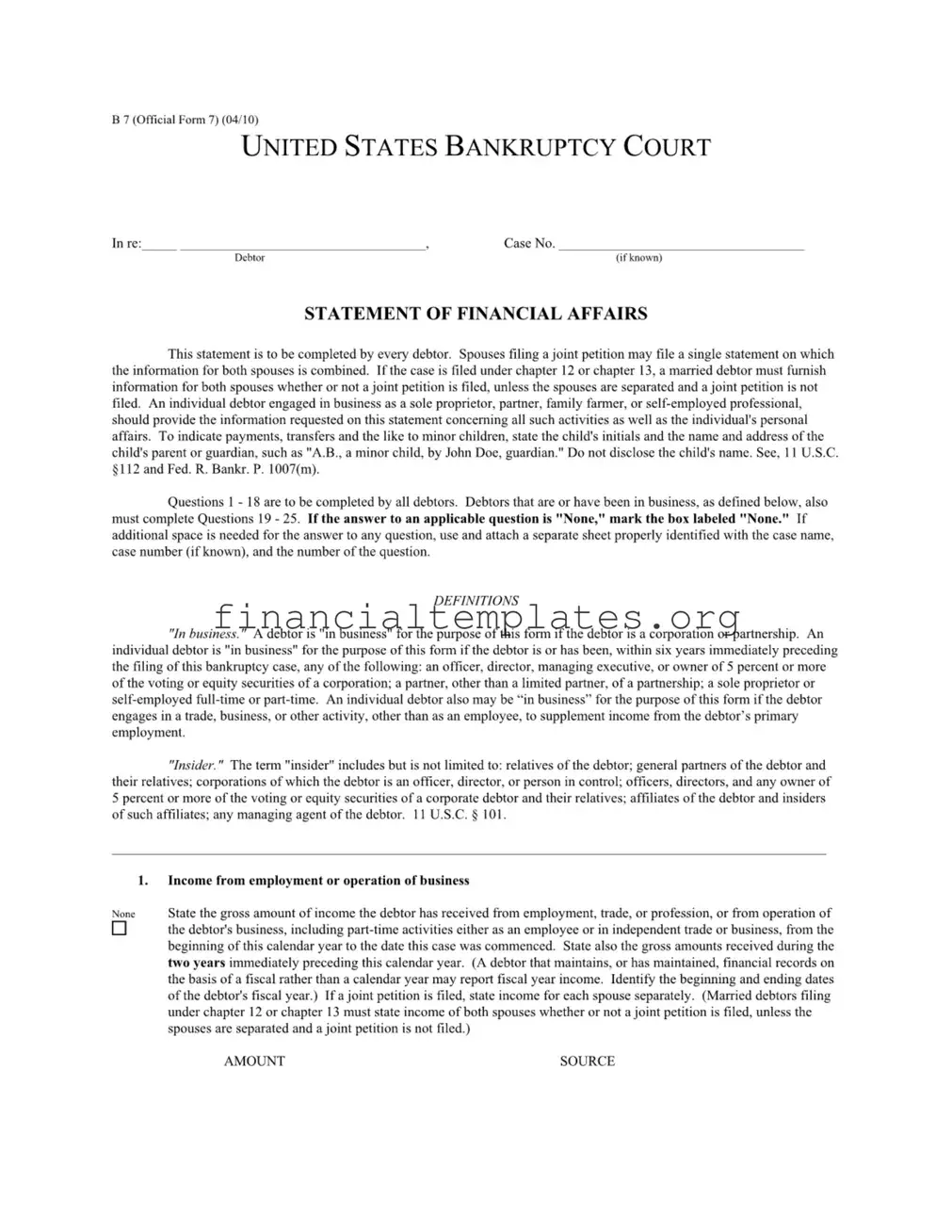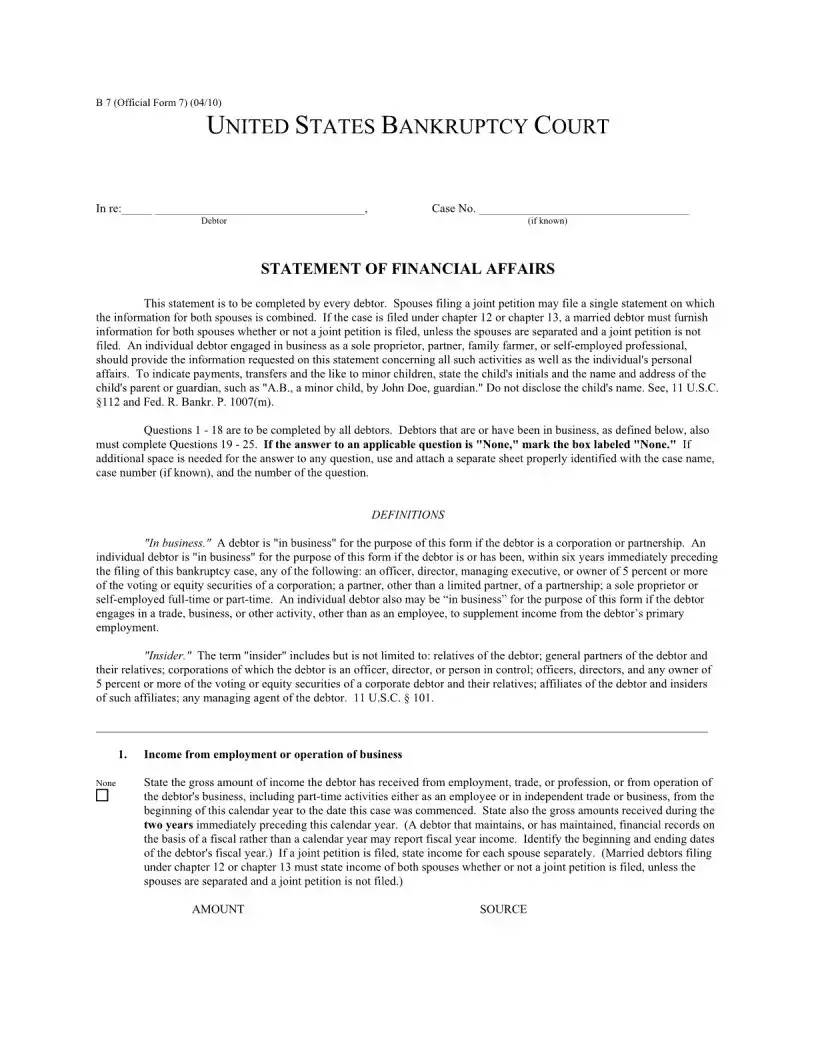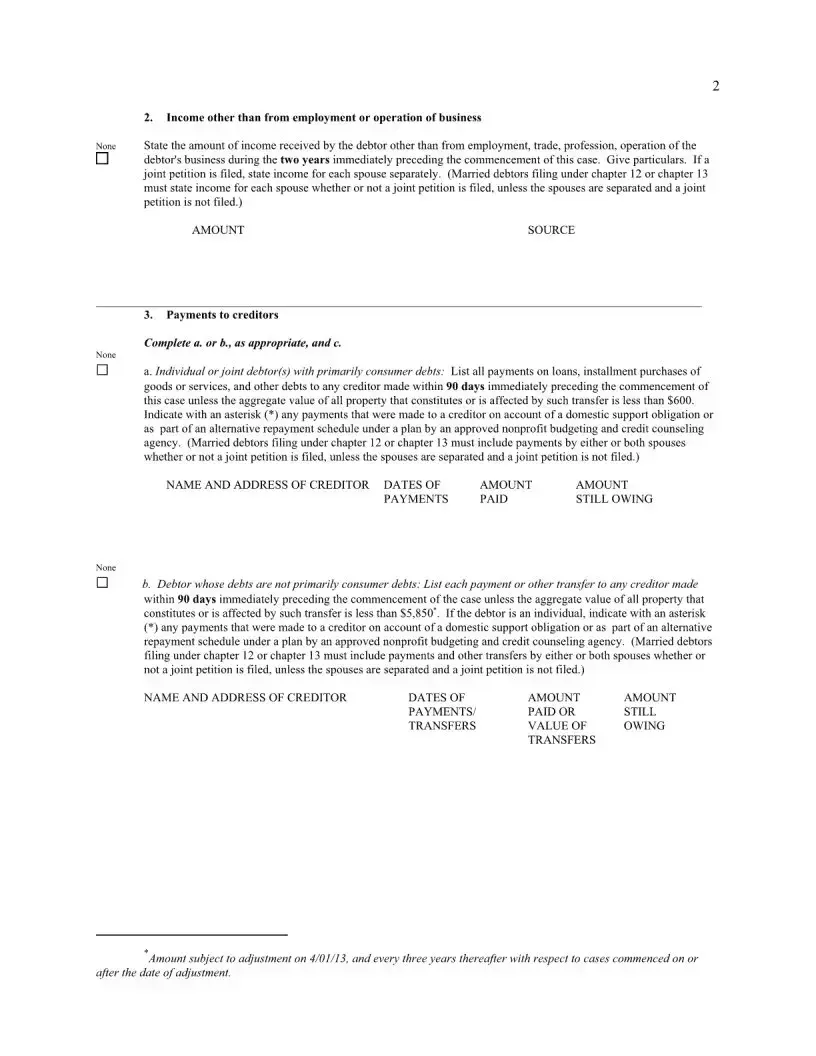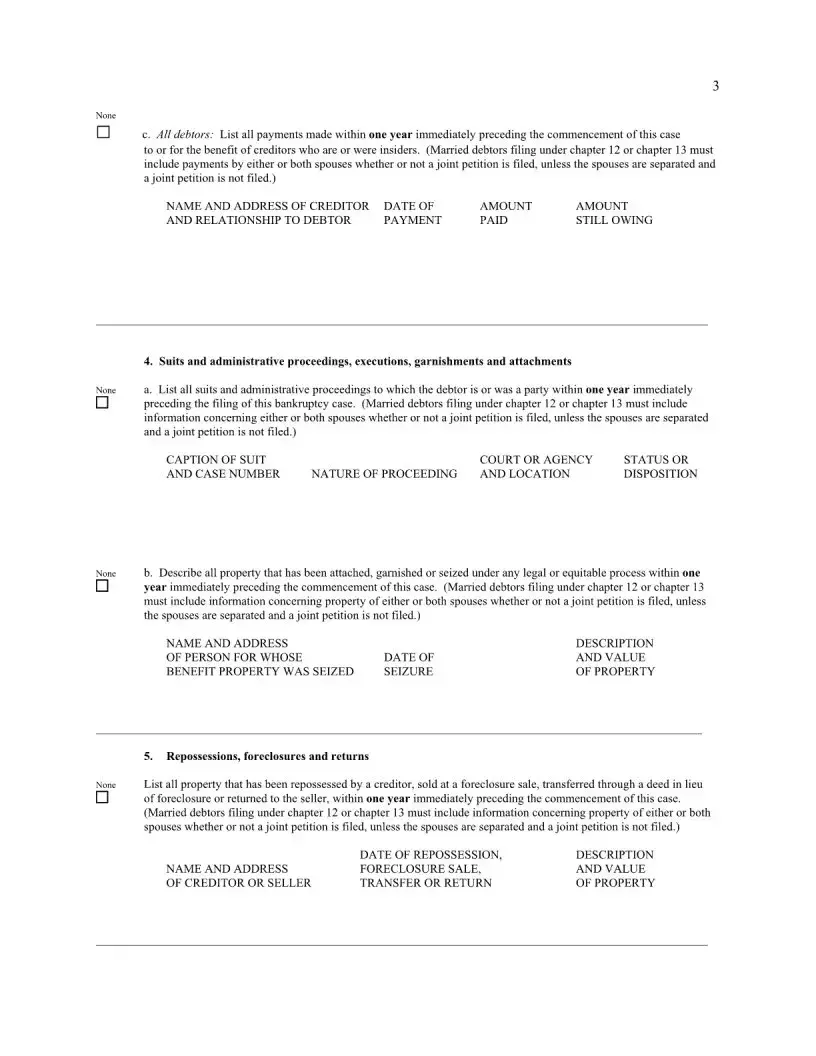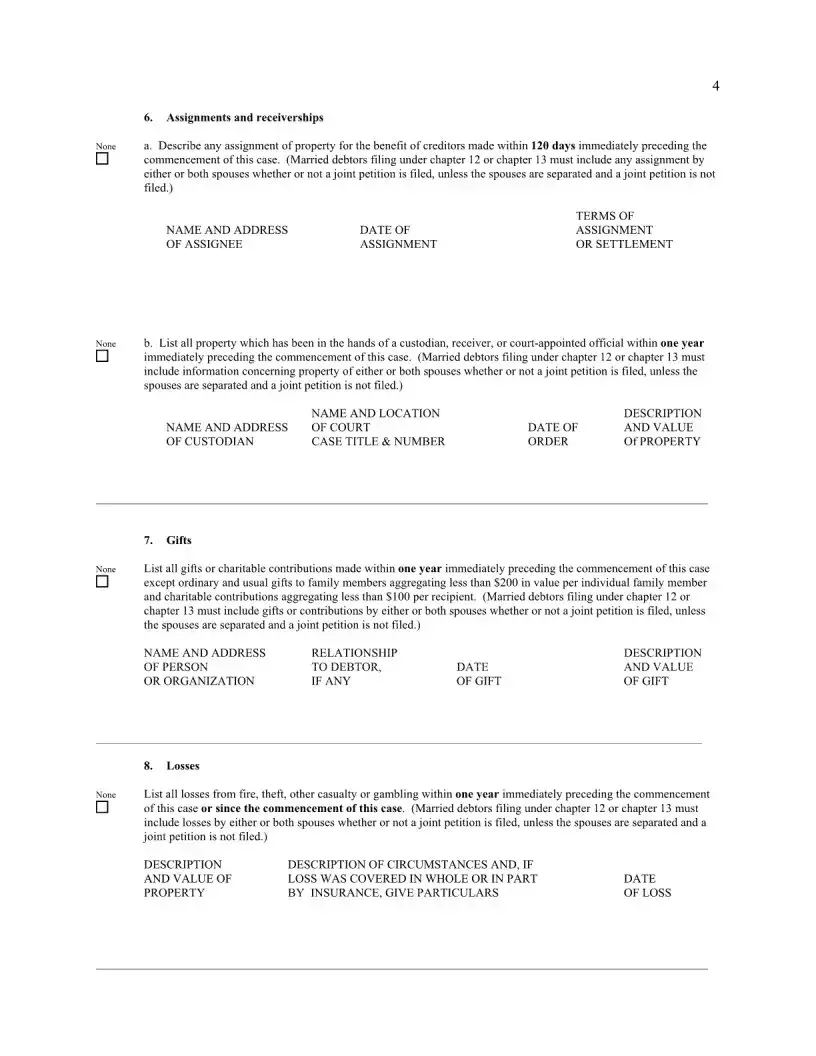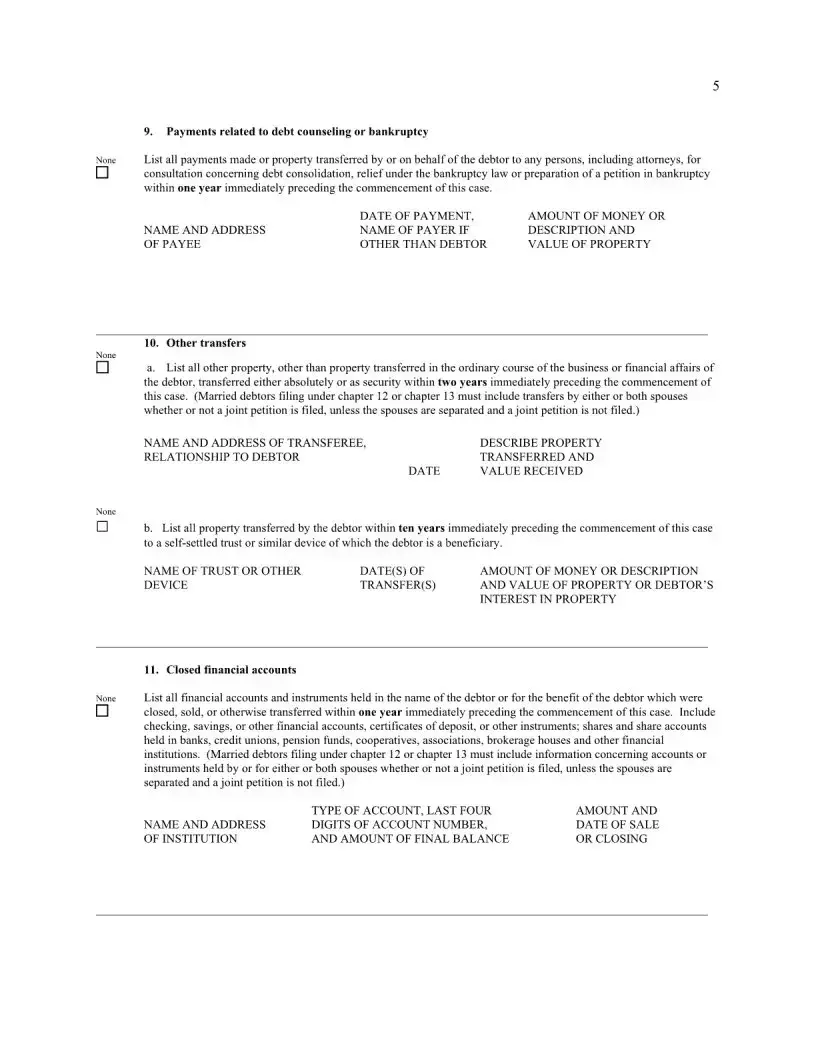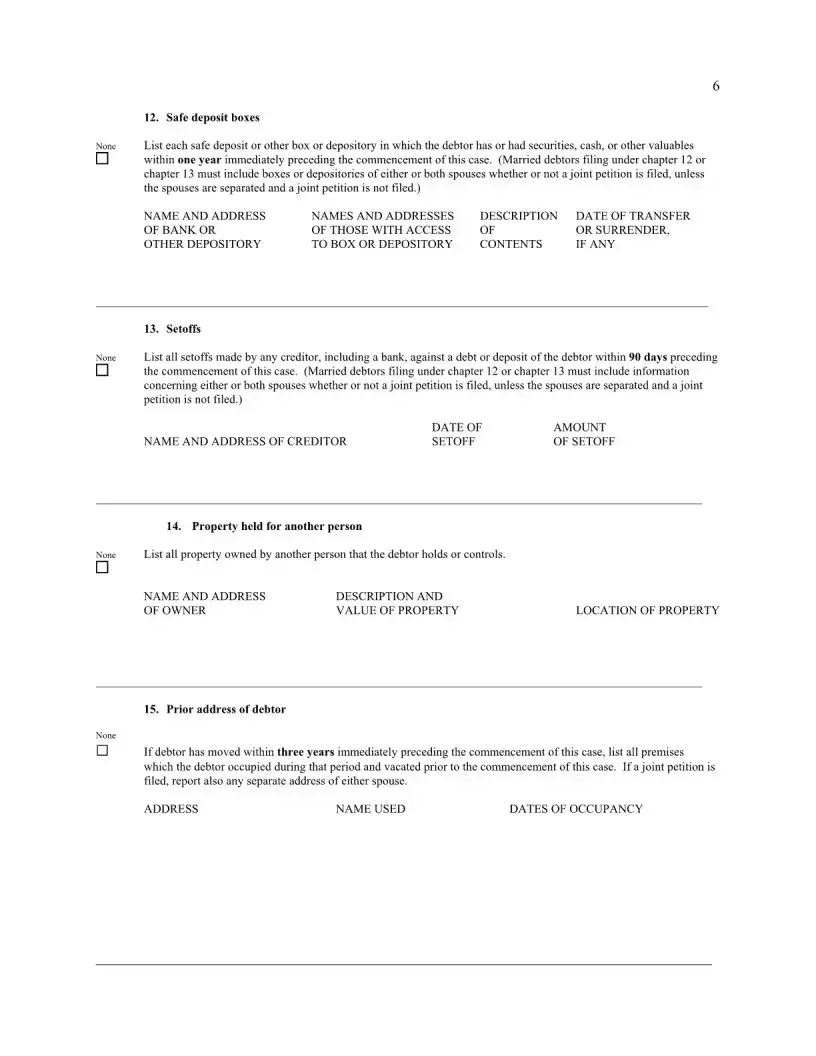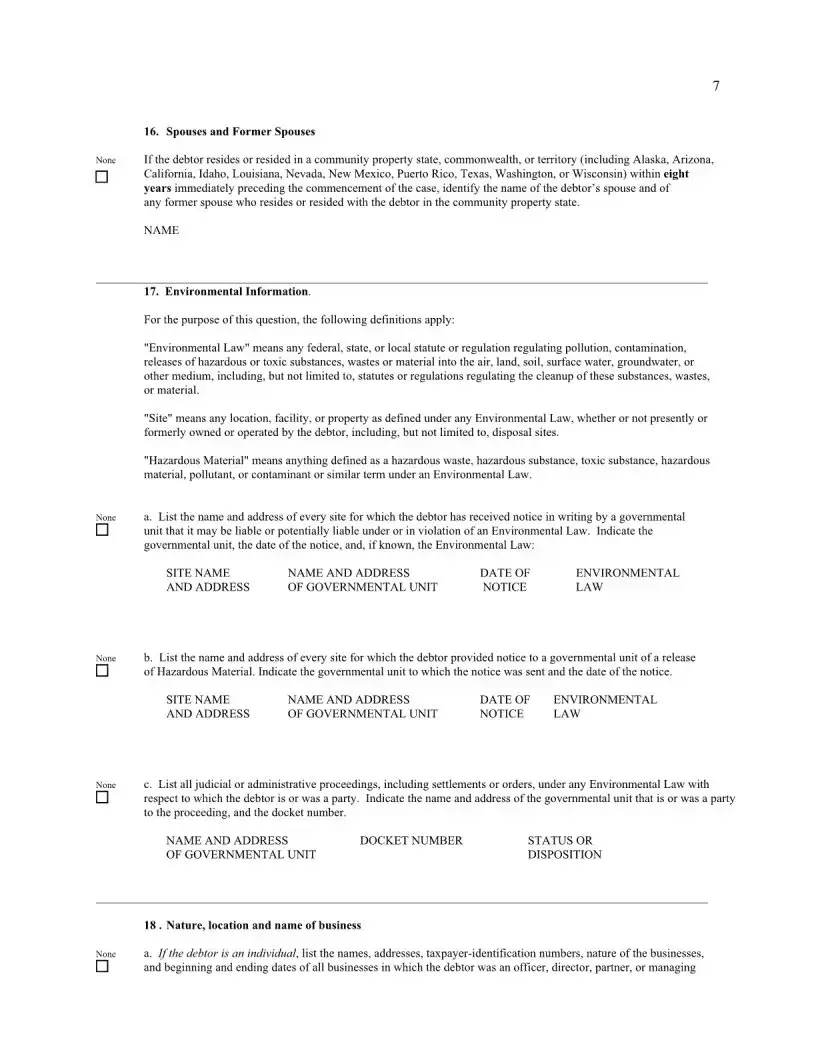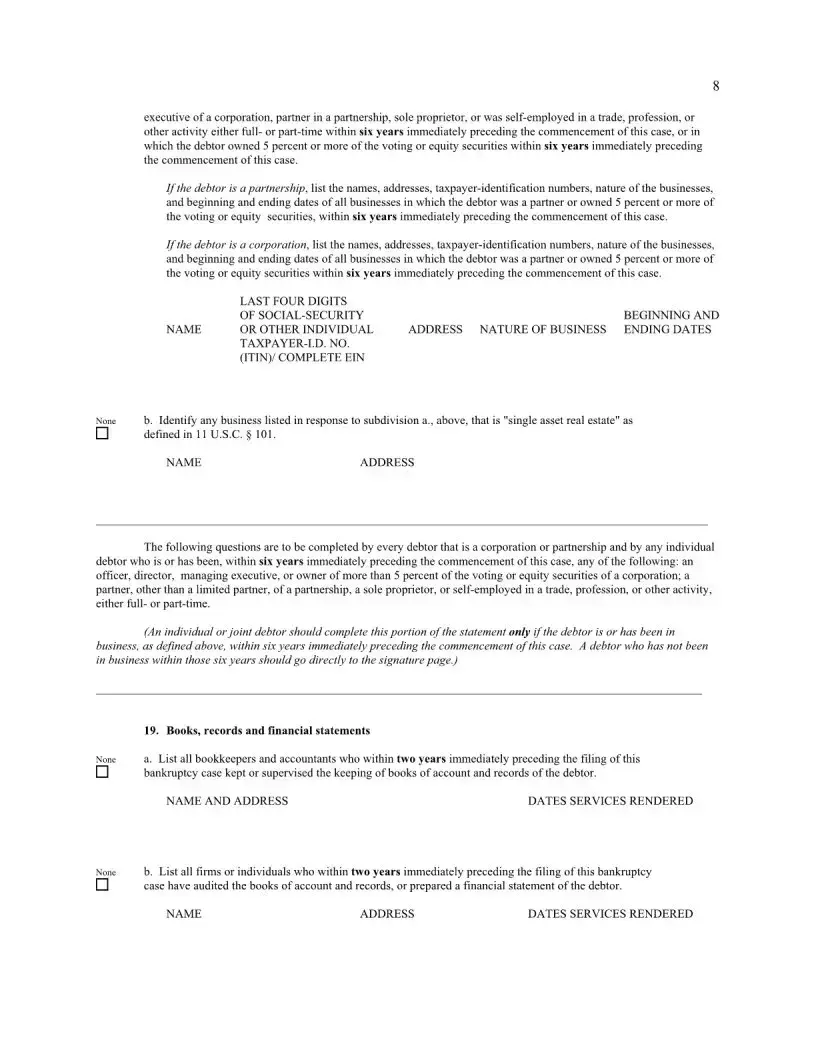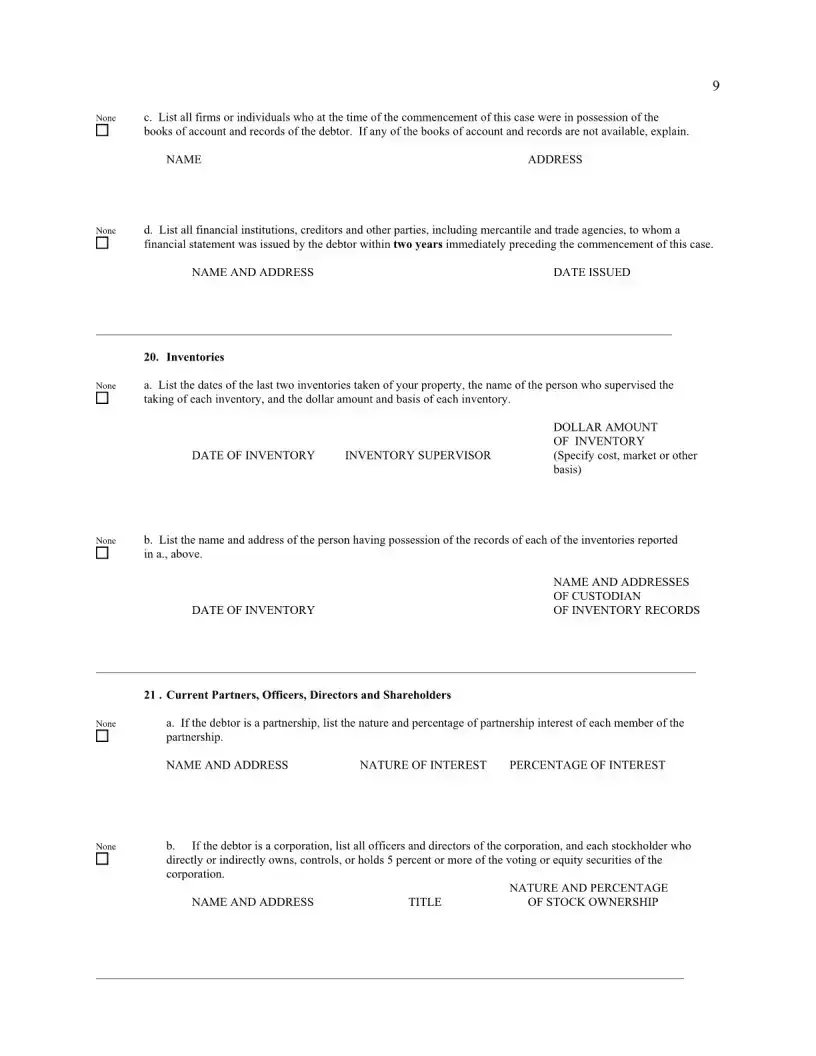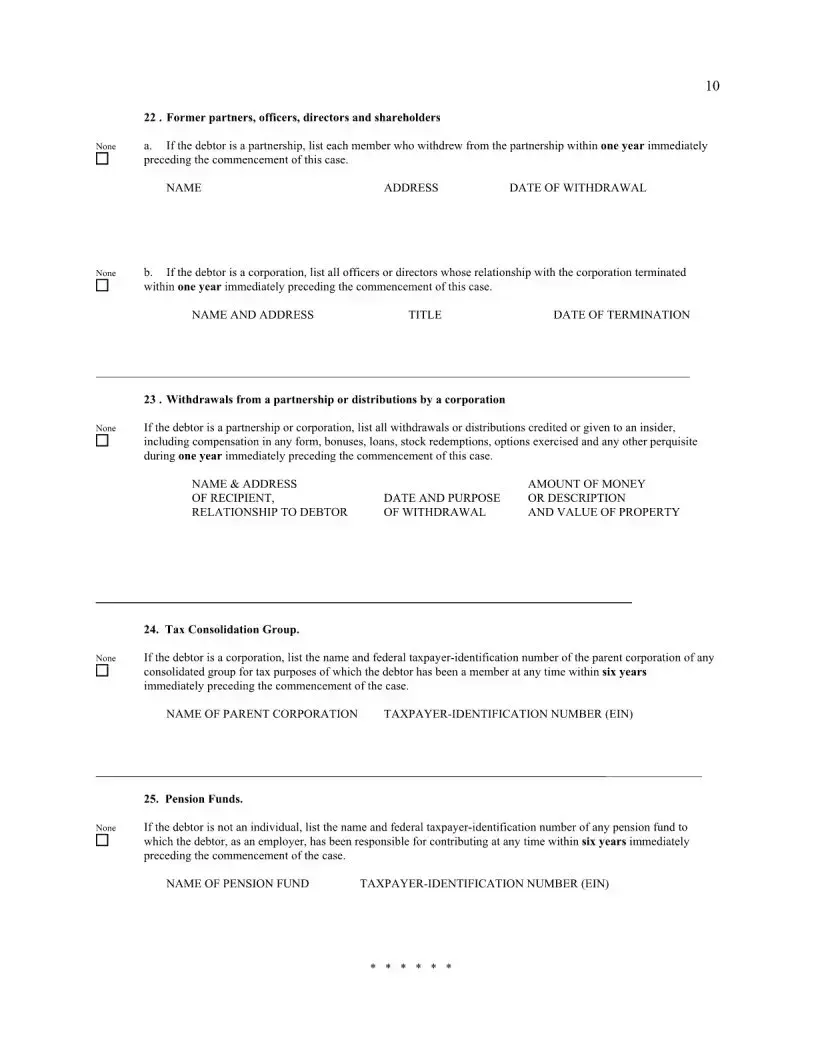The Statement of Financial Affairs form shares similarities with a Personal Financial Statement. Both documents require the individual to disclose their financial status, including income, debts, and assets. The Personal Financial Statement, like the Statement of Financial Affairs, often includes details about income from employment or business operations, and outlines liabilities and assets, providing a comprehensive view of one's financial health. This form is commonly used when applying for loans or financial assistance, aiming to give lenders or other interested parties a clear picture of an applicant's financial position.
Akin to the Statement of Financial Affairs, the Balance Sheet for businesses serves as a financial snapshot at a specific point in time. It details a company's assets, liabilities, and shareholders' equity. While the Statement of Financial Affairs is tailored for bankruptcy proceedings, detailing the financial transactions leading up to the filing, the Balance Sheet offers a broader view of a business's financial health, instrumental for stakeholders to make informed decisions. Both documents play crucial roles in assessing financial stability and operational viability, albeit for different purposes.
The Schedule of Assets and Liabilities, which is part of the bankruptcy filing process, closely resembles the Statement of Financial Affairs. It requires detailed information on all assets and liabilities, including secured and unsecured debts, similar to sections of the Statement of Financial Affairs that deal with creditors and debt obligations. This schedule provides a more focused look at the debtor's financial obligations, complementing the broader financial overview given by the Statement of Financial Affairs by offering a detailed account of what the debtor owns and owes.
Income Tax Returns share common ground with the Statement of Financial Affairs through the disclosure of income details. Both documents require individuals to report their earnings from various sources, including employment, business operations, and other income. Tax returns, required annually, offer a yearly overview of an individual's or business's financial activities, serving as a formal declaration to the government. The similarity lies in the necessity for transparency about financial transactions and status, albeit for different authorities and purposes.
Finally, the Credit Report parallels the Statement of Financial Affairs with its focus on financial history, particularly regarding debts and credit activities. A credit report includes detailed information on an individual's or business's credit accounts, payment histories, and any actions like bankruptcy filings. While the Statement of Financial Affairs provides a self-reported account of financial dealings leading up to a bankruptcy case, a credit report offers a third-party perspective, summarizing credit history over time to inform lending decisions. Both are pivotal in evaluating creditworthiness and financial conduct.
